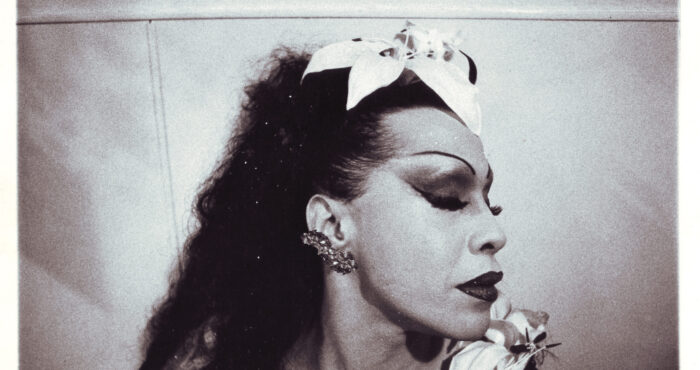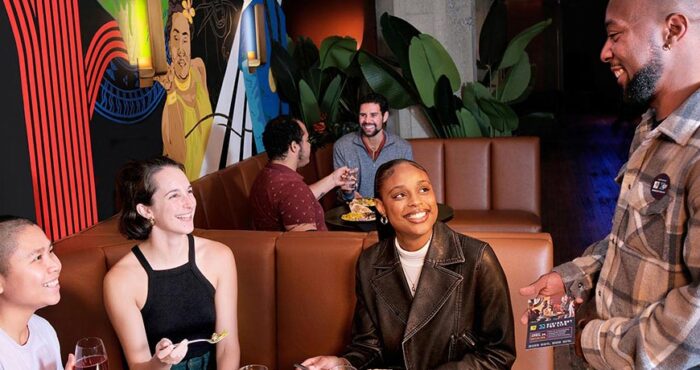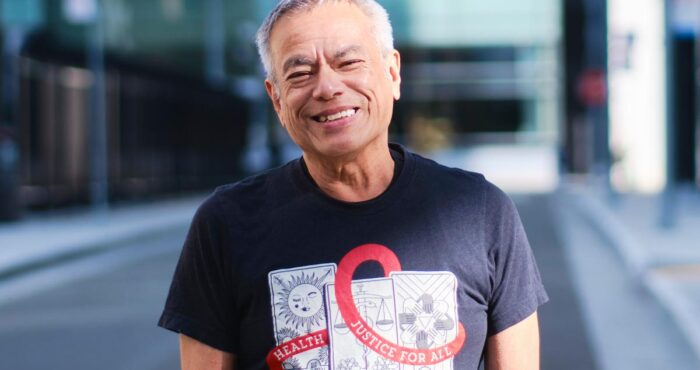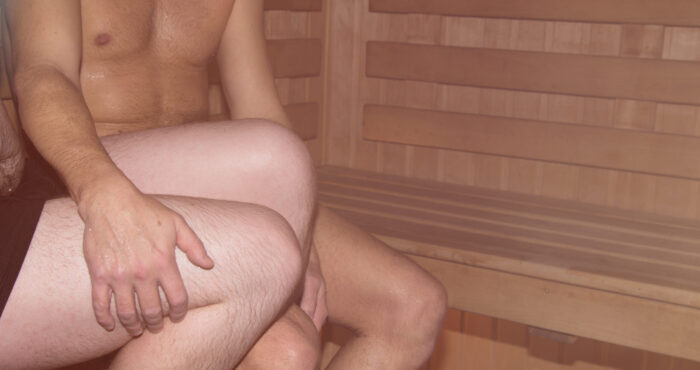Editor’s note: In light of the protest movement for Black lives and the many conversations happening about how to end white supremacy and racism, we’re re-sharing content from a San Francisco AIDS Foundation event in 2017 about racism and white supremacy in the queer community. We hope the information and perspective shared here helps our readers explore the impacts of white supremacy in their own lives and start conversations with others.
Racism and white supremacy permeate every aspect of our lives. Too often, however, it’s an issue that gets glossed over by people in power with white privilege. What are the ways that we see racism and white supremacy play out in subtle (or not-so-subtle) ways in the queer community, or in health care?
At a community event held at San Francisco AIDS Foundation, we asked community members De’Anthony Jones, Honey Mahogany, Andrew Jolivette, PhD, and Don Romesburg, PhD to reflect on white supremacy and racism in the queer community, and share their thoughts on upending systems of oppression for Black, Indigenous and People of Color (BIPOC) in our community.
What is racism–and how does it show up?
The most common mistake that people make when talking about racism (white supremacy) is to think of it as a problem of personal prejudices and individual acts of discrimination. They do not see that it is a system. A web of interlocking and reinforcing institutions: political, economic, social, cultural, legal, military, educational—all of our institutions. As a system, racism affects every aspect of life in a country. By not understanding that racism is systemic, we guarantee that it will continue. —Chicana movement leader Betita Martínez
Andrew Jolivette, PhD, professor of American Indian Studies at San Francisco State University, posed a question to explore the difference between “prejudice” and “racism.” He asked: “How many of you think that people of color can be racist?”
Although people of color can be prejudiced, biased, or discriminatory towards white folks, it’s not possible for an oppressed group of people to be racist toward the group of people holding power, said Jolivette.
“A friend of mine, who’s also Native American and his wife who is white, said, ‘When we go back to my reservation, what about when the Tribe is rude to my wife? When we go to the bar, or the casino, and they treat her differently?’ I said, ‘Yes, but do Native Americans as a group have the ability to oppress white women? Or white people? They don’t.’”
Institutional racism, explained Jolivette, happens when organizations oppress groups of people—for example, when groups of people are denied access to space or resources. Or, when an organization values the cultural norms of one group of people over another group of people. In the U.S., institutional racism has been responsible for slavery, settlement, Indian reservations, segregation, and internment camps, and its lasting effects are seen in race-based disparities in wealth, income, measures of health, and more.
Systemic racism happens when a system functions in a way to reproduce racism and to delegitimize people’s stories. White-majority companies and organizations that hire primarily white leaders and staff because of a “culture fit” or shared values are operating from a place of systemic racism. Police forces that primarily patrol Black neighborhoods and target Black community members are guided by systemic racism.
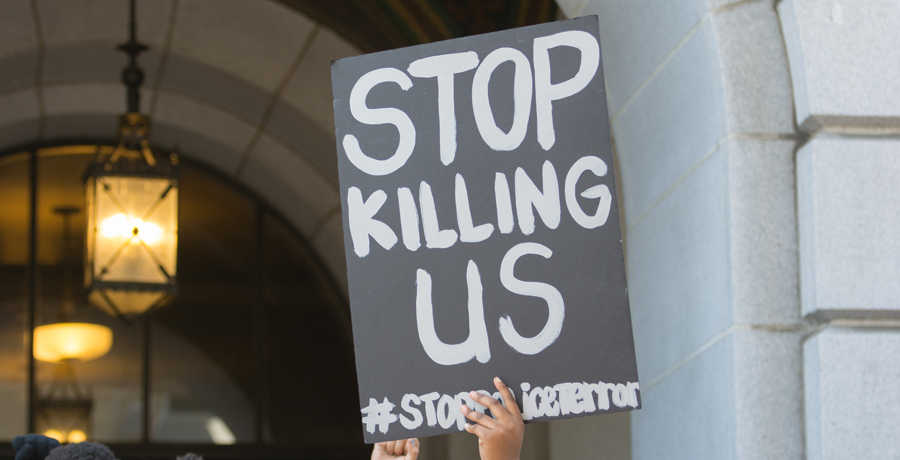
An enduring history of racism in San Francisco’s queer community
Don Romesburg, PhD, professor of women and gender studies at Sonoma State University, shared historical research he did on instances of racism in bathhouses and bars in San Francisco. There were three main findings from his research:
- Racism has been a problem in San Francisco’s gay community, especially since the Castro became a gay neighborhood in the early 1970s, and the problem has not abated over time despite periodic efforts to curb it.
- Periods of activism have provoked tangible changes to specific businesses and practices.
- Businesses in the community have been slow to respond to calls to reform, doing so only by being forced to by bad public relations or loss of revenue.
Romesburg outlined some of the formal and informal campaigns against racially discriminatory practices in gay bars over time—including community response to hiring discrimination, selective identification checking practices, the sale of racist paraphernalia, and more. Romesburg also described the inspiring change produced by the “And Castro For All” campaign, but said that “the struggle continues.”
How do we see white supremacy in the queer community?
Access to health resources, including PrEP, HIV medications and HIV clinical trials, is impacted by white supremacy, said Jolivette.
“Folks of color are two to three times less likely to have health insurance, so they’re not going to have access to these [PrEP and other medications]. The sexuality of queer folks of color also plays into that too, and what we’re supposed to do with our bodies, and how they’re regulated and controlled,” he said.
Jolivette also mentioned how he sees white supremacy play out in access to housing. “In particular, 40% of homeless youth are queer. We know many of them are queer folks of color. Homelessness is a big issue that doesn’t get talked about enough.”
De’Anthony Jones, a community member who is on the Equity Advisory Board of the Human Rights Commission, and is a policy co-chair for the Alice B. Toklas LGBT Democratic Club, talked about how racism surfaces on dating/hookup/social apps.
“It’s the blessing and the curse of technology. The blessing is that you can make those social connections with apps. But the curse is that you’re able to filter out people. You can shut down people before you get to know them. Social spontaneity has lost its place,” said Jones.
“This is systemic racism,” explained Jolivette. “It’s not about the app, it’s about how we’re socialized to think about what is beautiful. It’s like when you hear, ‘She’s pretty—for a Black girl.’ Ideas of beauty are playing into this.”
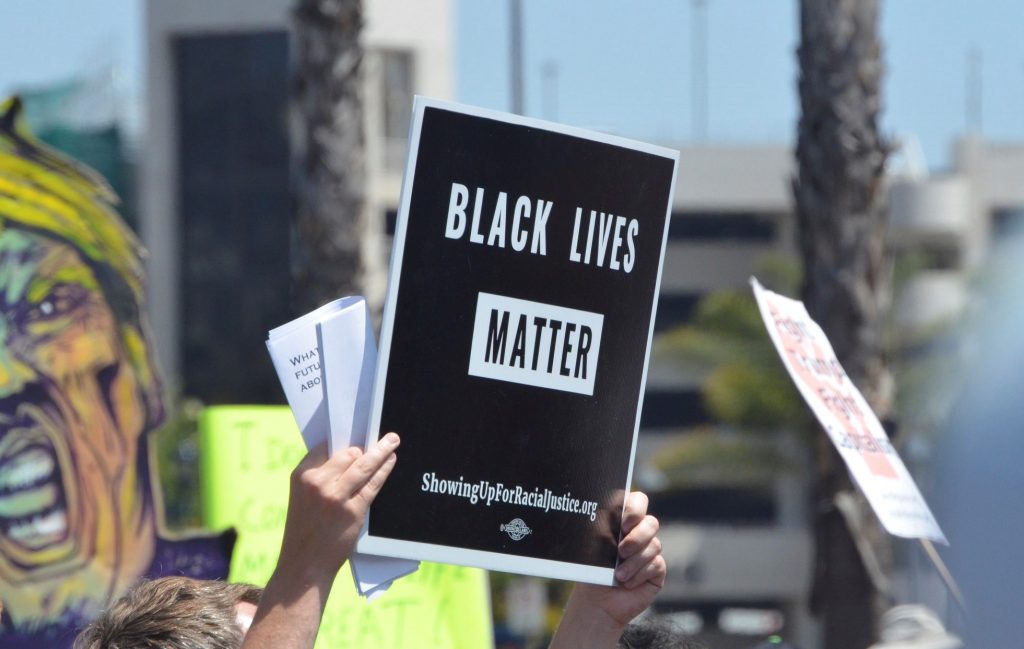
Don’t be the racist on Grindr
Romesburg offered a few suggestions for how people can be more inclusive on dating/hookup apps: namely, to “not be the racist on Grindr.”
“Don’t be the one that gets called out for your, ‘No fats, no femmes, no Blacks, no Asians’ bullshit. Check yourself before you do that. Be open and aware about what is such a loaded dynamic for so many men of color in that space. Be sensitive and attuned to that. Even if you’re having a casual conversation that has to end with a respectful decline, do that in a way that is conscious of the power dynamic that’s at play in that relationship,” he said.
Romesburg also said that while folks should strive to be open and aware of the “extremely blatant” racism that men of color experience on apps. “Don’t be the denialist. Lean in, and listen.”
“We limit whole groups of people to sexual desires,” said Jones. “I used to be one of those individuals that filtered folks out, based on race, based on whatever. The reason I say that, is because I want folks to come with those mindsets. Some of us have to come with the ignorance and mistakes we’ve made in order to open ourselves up.”
Honey Mahogany added that it’s important for people to think about why they’re filtering people out. “What does putting those filters on do to us? What does it reinforce? If we can acknowledge that there is racism, and that there is systemic and cultural racism and all these things we’re taught—and that it’s not really our fault, but that it is our fault when you put on those filters and start to filter out everybody. That is something we have control over. That is something we can do to reprogram ourselves.”
“Why not try a different color, try a different flavor,” said Honey Mahogany. “Go out of your comfort zone a little bit. I mean we tell people, if you’re a top you’ve got to bottom at least once to know what you’re doing.”
Tips for white folks on how to move toward racial justice
- Understand intent versus impact, said Honey Mahogany. “Even if you’re well-meaning in your intentions, look at the fact that some of your actions may have impacted someone in a negative way. Be able to sit with that, and acknowledge that moving forward.”
- “Let go of your ego,” said Romesburg. “I encourage everyone who is white to be expansive and humble.”
- Help implode the systems of white supremacy, from the inside, said Jones. “We need white allies to get inside of this system and bring it down.”
- Don’t say you’re “colorblind,” said Jolivette. “That tells me you don’t see me. It’s like saying, ‘I don’t see gender.’ Yes you do!”
- Do your homework, said Romesburg. Learn more about the history of how power and culture operate through race in our world.
- Honor your interactions with people of color even if you fuck up and there’s hostility, said Romesburg. “Don’t be defensive. Take a breath before you respond. And understand the interaction you’re having is bringing the history of the past into that moment.”
- It may not be important for you to be fully understood, or to show that you are right,” said Romesburg. “This is a big one. White people, I think we really like to be understood. And get our point across. Just understand that this is not the most important part of the dynamic. And that you can do a lot with people of color by just listening, and following.”
Can we change the economy of racism?
Because structural and institutional racism have a significant impact on the distribution of wealth in our country, are there things that white folks can do to upend the system?
Jones said that it’s important to uplift folks in the margins, in a meaningful way. “Instead of having someone [a person of color] shadow you at your bar, help them open their own. Bring in trans folks. Bring in women. And not only bring them in, but give them value to the organization.”
“Communities of color are being pushed out of the city,” said Romesburg. “We need to be more imaginative in calling people in power accountable. And demanding more around agreements and workforce development.”
Jolivette raised the issue of property ownership in San Francisco.
“If folks are radical and they want to see change, particularly people who do have resources in the Castro, what do you do with your property if you have no children? What are you going to do with it? Leave it [to benefit] homeless queer youth and queer youth of color,” he said.
Honey Mahogany discussed her own experience as a co-owner of The Stud, a cooperatively owned queer bar in San Francisco, as one creative example of how to uplift people of color. Producing Black Fridays, Honey Mahogany hires only African American DJs and other performers, and SURJ works the door. The proceeds from the night go to fund the Compton’s Transgender Cultural District in San Francisco, a cultural district founded by a trans woman of color to honor the history of Compton’s Cafeteria.
Watch Black television
To close the evening, Honey Mahogany offered a creative way for white folks to support people of color and at the same time work to reset the social conditioning we’ve learned around race.
“There is an amazing abundance and re-birth of Black television that has happened,” said Honey Mahogany, citing shows including Queen Sugar and Insecure. “You need to get on Amazon Prime and buy these episodes and show people you care. It’s a really small way that we can talk about reparations. Honestly though, these shows are damn good. We watched Friends all those years…”
Additional reading:
- Me and White Supremacy, by Layla F. Saad
- How to be an Anti-Racist, by Ibram X. Kendi
- 24 Actions You NEED to Take to Help Trans Women of Color Survive
- A Declaration of Liberation: Building a Racially Just and Strategic Domestic HIV Movement
- HIV/AIDS Inequality: Structural Barriers to Prevention, Treatment, and Care in Communities of Color: Why We Need a Holistic Approach to Eliminate Racial Disparities in HIV/AIDS






